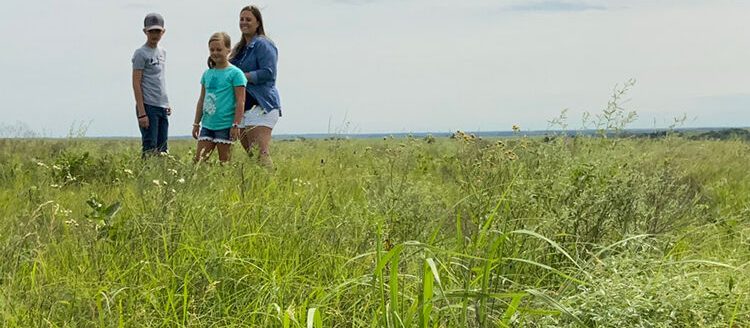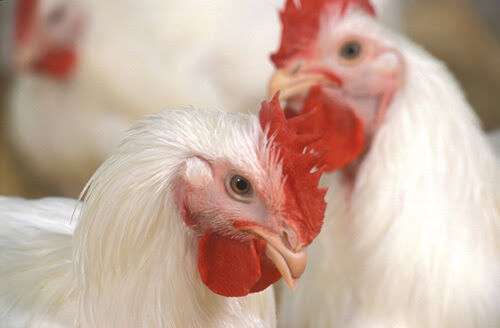Green-season burning: Winning the war on redcedar

For Daryl Donohue, redcedar might as well be a cuss word.
The Wilson County rancher recalls his first encounter with the invasive species. He was just 6 years old. His father handed him a hatchet and pointed to an eastern redcedar sapling growing across the creekbank.
“Go cut that little baby cedar tree down,” his father said as he headed to check cattle.
Five decades later, Donohue, 55, is still at war with the redcedar. Moreover, he is winning.
Yet, his battle plan isn’t typical of most Flint Hills ranchers. He doesn’t always follow their customary calendar, which is to put pastures to blaze only during the spring. Instead, Donohue is mixing into his pasture management strategy a practice that he says syncs more with Mother Nature herself.
“If you can work with her instead of against her, you’re further ahead.”
He calls it green-season burning. Moving some of his prescribed fire management from March and April to late summer and early fall is helping to reduce not only redcedars but also woody invasives and sericea lespedeza. It’s especially true in his draws, which for years, have been hard to kill with spring fires.
These areas are turning from a woody forest to savanna, giving him more acres for grazing.
“There is a quote that the captain should know every weld in his ship,” Donohue said. “I look at it like that. My theory is that instead of getting bigger, I want to get better. And I can get better if I think about our prairie environment.”
Veteran proponent of fire
Before European settlement, natural fires were always part of prairie management, whether kindled by lightning strikes or Native Americans, who used the method to refresh grass growth and attract migratory bison herds. Fire occurred often enough to maintain the tree-free grassland ecosystem, according to the National Park Service.
Settlement caused a decline in prescribed fires, Donohue said. He recalled an aerial photo of the area from the 1930s that showed sweeping grassland free of trees—even in the draws.
“As soon as the plows hit the prairie, that changed,” he said.
Donohue is a fifth-generation Kansas farmer and rancher whose ancestors came to Wilson County shortly after the Civil War. His great-grandfather started taking care of native bluestem in 1880, and some of that land is still part of Donohue’s operation.
For years, fire has been part of his family’s management regimen, he said.
“My granddad and dad were both adopters of prescribed fire,” he said. “Granddad really pushed it when others didn’t. He knew he had to take care of that grass.
“My dad said the first time they had him help burn pasture, he was 5 years old,” Donohue added. “They put him on a Shetland pony and gave him a box of matches and told him to ride the fence line.”
Yet, while his pastures would stay relatively clean, Donohue said it became tough to keep up with troubled areas, including draws. This was especially difficult amid years of heavy rains.
Sign up for HPJ Insights
Our weekly newsletter delivers the latest news straight to your inbox including breaking news, our exclusive columns and much more.
“Fire goes uphill better than it goes downhill, and we took for granted that our spring burns were going to take care of those areas.”
After a 100-year flood in 2007, Donohue began to see cedar sprouts where the fire couldn’t reach, along with woody invasives, sericea lespedeza and poverty grass. Soon, he had a mini forest—or a “green glacier”—taking over that acreage. It was becoming harder to run the correct stocking rate and manage water resources. Each tree robbed his soil of 30 gallons of water a day during the peak season.
His cows, which would go to the draws for shade, became more susceptible to anaplasmosis—a tick-borne disease caused by dog ticks harboring in cedar trees.
Learning something new
Donohue’s management practices changed after learning more from a neighbor, John Johnson.
“He had a really good-looking native prairie, and that sold me,” he said.
Johnson, who grew up in the Texas Panhandle, came to the area in 2012 as the Kansas Department of Wildlife and Parks’ public lands manager for Wilson, Woodson, Coffey and Greenwood counties. He manages several thousand acres of pasture, including 5,000 acres in Woodson County.
With a background in upland game birds, he fell in love with the tallgrass prairie but soon realized the commonly accepted management style of yearly spring burns and herbicide application wasn’t always maintaining a healthy ecosystem.
“How did we not have a weed problem 100 years ago?” Johnson asked himself.
History shows that wildfires happened at random intervals throughout the year, he said.
He began following John Weir, an Extension fire ecology specialist at Oklahoma State University who has spent 25-plus years researching the effects of late-summer burns on the prairie.
Johnson lit his first green burn on July 28, 2014—a day when temperatures soared above 100 degrees and there was little wind. He caught the curious eye of neighbors, who thought the wildlife and parks manager had lost his mind.
He laughs about his neighbors’ first perspectives of his new management practice. However, he adds, many of those same neighbors soon were swayed after seeing the results.
“Species that haven’t been documented in 100 years were coming back within one to two years following a summer burn on the landscape,” he said.
Moreover, invasive species, including cedars and sericea, are being drastically reduced. Johnson conducts quarterly data collections, including species composition and biomass production, on all of his pastures. Over the past 10 years, he has reduced sericea biomass by 65%.
“The native plants are pushing out sericea,” he said. “There are still patches of it, but I’m not scared of sericea lespedeza. It’s not having an impact on my pastures.”
Recommendations
Oklahoma State’s Weir said more ranchers are seeing the benefits of late summer burns as part of their management plan for several reasons.
1. It’s safer and easier to burn during the growing season. Weir said fire moves slower and it is easier to contain and control. It also spreads the burning season out from just March and April, when seasonal weather patterns like strong winds and thunderstorms cut back on quality burn days.
“Weather patterns in late summer are more consistent, and you have more burn days,” he said. “It adds more burn days to the year.”
2. Summer fires are more effective in killing brush and cedars. Weir noted temperatures need to reach 150 degrees to kill most living plant tissues. During the summer, when it is already 100 degrees, it is easier to increase the temperature of a tree by 50 degrees rather than 80.
“Secondly, he said,” because it is a slow-moving fire, it is not as intense and has shorter flames. But it is putting out the heat, and it stays there for a longer period of time, whereas a springtime fire moves much more quickly. It might be hotter but it doesn’t last as long.”
3. Cattle still are getting increased protein levels from the grass, plus the gains. “Landowners burning late summer/early fall and dumping cattle on pasture in the spring are seeing similar results,” Weir said. “Our burning in the late summer puts the proteins levels up just like spring burning.”
Johnson added the ranchers grazing cattle on his acres are reporting excellent gains, as well. The 10-year average has been 2.8 pounds of gain per day on cattle put on summer-burned pastures without the use of broadcast herbicide application and annual spring burns.
4. There isn’t one right way. Weir said ranchers are adjusting their fire plans to fit their needs. Some do a mixture of spring and summer burns. He added some ranchers continue to use mechanical methods and herbicides to treat cedars, but fire is key.
“If you don’t treat those mechanical areas with fire, you have wasted your money because in 10 years it will be the same cedar density or worse than before.”
Weir said he recommends burning at least every three years to help with invasive species control, plus wildfire suppression.
A tool in the toolbox
Johnson’s goal is to implement soil and pasture health practices while being profitable. He does this through a nine-year rotation that includes two summer burns and two spring burns, three years of rest from fire, plus a full season without any grazing.
Johnson’s goal for the land he manages is to promote conservation-style management while being profitable. He currently implements a six-year fire rotation that consists of a two-year burn interval and includes a growing-season burn every third fire. Other contributors to his grazing management include scheduled variable grazing intensities, scheduled variable grazing stocking dates and a full-season grazing deferment once every fifth year.
“There is a big misconception that what will work for me will work for everyone,” he said. “But realistically, that’s not true. Every landowner or producer has different needs and situations. Every pasture is different.”
It’s one tool in the toolbox, he said, adding that for those wanting to try late-summer burning for the first time, start small.
“The biggest blowback I get from producers who do this for the first time is that they see a flourish of broadleaf plants that they have never seen before. And, that first year, that gets a lot of them scared. Don’t be scared because you see some of those plants. It’s just we are shocking the system.”
Ranchers need to be patient, Donohue added.
“You are doing something completely different that you aren’t used to doing,” he said. “The results are worth it.”
Johnson added that when he started his management practices, he had 70 to 80 different species between grasses and broadleaves. “Our 2021 data collection showed 271 different species of native plants.”
Donohue said he continues to use some mechanical efforts to kill cedars, especially in the winter. Instead of burning fencerow to fencerow, he rotates his summer and spring burns like a patchwork quilt, depending on the situation.
“I don’t advocate burning the whole ranch with a green-season burn,” he said. “Target the areas that are the worst.”
His draws are turning back to grassland. His draws are coming back thicker and are flush with native forbs and legumes. He also is seeing more prairie chickens.
“We have regained 4 or 5% of our pasture back,” he said.
Donohue is winning the war. The green glacier is melting, he said.
“I’m known as the cedar tree hater of Wilson County,” he said. “I’m trying to get our pastures back to the way they were when my ancestors settled here.”
Amy Bickel can be reached at [email protected].



